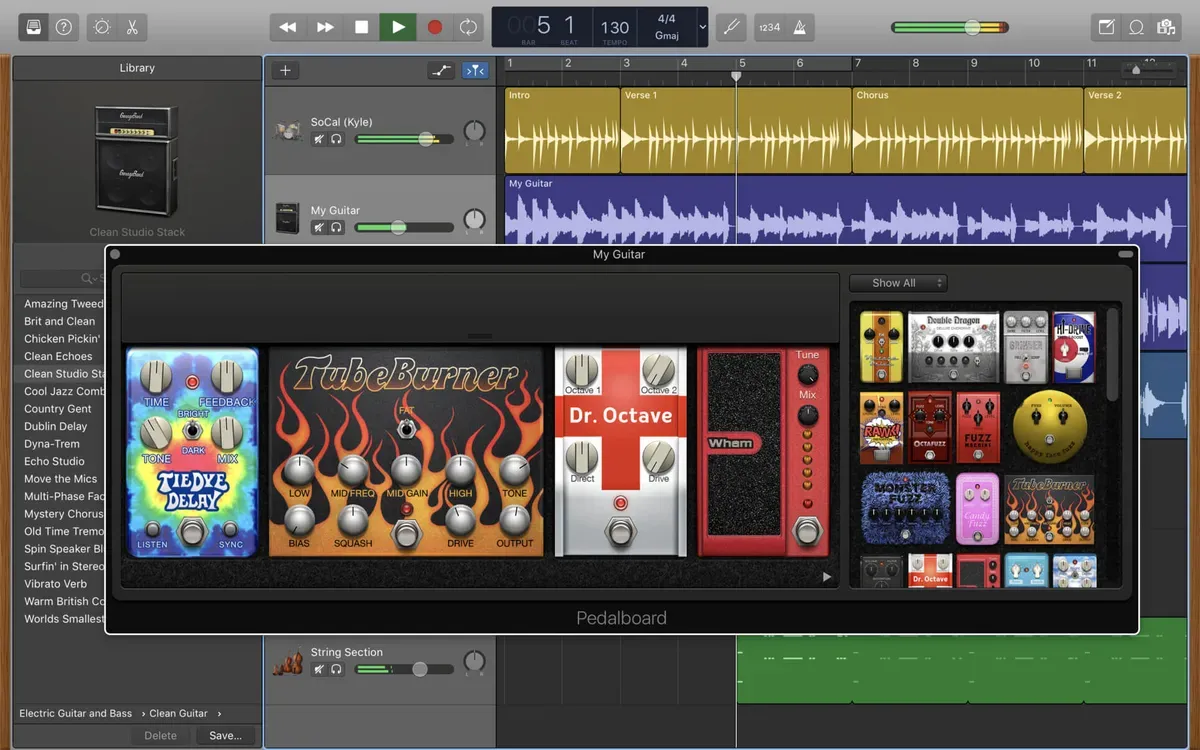Many producers’ first encounter with music production software was with Garageband. It’s a basic DAW that comes with every Apple computer sold.
Despite being designed for inexperienced musicians and producers, Garageband remains an excellent tool for creating music in 2022. Even so, if you’ve never used recording software before, there may appear to be a lot to learn.
I’ll go over everything you need to know about Garageband to get started making music in this article.
What is Garageband?
Garageband is an entry-level DAW that is modeled after Apple’s flagship audio production app, Logic Pro.
It has a streamlined set of options and controls designed to make recording music simple for anyone.
In 2004, developers included Garageband with basic Mac OS installations and quickly became a user favorite.
It comes with hundreds of ready-to-use instrument presets, loops, and other musical raw materials to help you start.
Not only that, but the app now has iOS companion apps that allow you to create music from anywhere.
The app is an entry-level DAW that its developers modeled after Apple’s flagship audio production app, Logic Pro.
This tool is one of the best free platforms to use if you’re a budding producer or simply a musician looking to have fun recording.
Garageband vs. Logic
If you’re looking for the best DAWs to get started with, you’ve probably heard of Logic Pro.
As previously stated, Garageband and Logic are similar in workflow and user interface.
Indeed, as their skills develop, many Garageband users progress to Logic.
Select Garageband if:
- You’ve never used music production software before.
- You are unfamiliar with music technology fundamentals such as plugins and MIDI.
- You primarily want to have fun with music and experiment with recording.
- You’re familiar with simple Apple apps like iMovie.
Select Logic if:
- You’ve intended to hone your skills as a producer.
- You understand the fundamentals of music production.
- You need a traditional mixing environment with buses and faders if you want to work with third-party plugins or content.
How to obtain Garageband
You’ll need an Apple computer to get Garageband. Because the DAW is one of their flagship apps, don’t look for a Windows version anytime soon!
However, anyone with a Mac or an iOS device can use it for free.
You should install the app by default in your applications folder on your desktop.
You may need to open the App Store on an iOS device to download the mobile version of Garageband. Nonetheless, you will not pay to use the app!
The procedure is straightforward, but it’s worth noting that you should update your system to the most recent version in order to use the most recent version of Garageband.
If you accidentally deleted Garageband, you can always go back to the desktop App Store and download it again.
Garageband basics
While Garageband can perform many of the same functions as other DAWs, its interface has been simplified for ease of use.
I’ll go over the main features of music production, describe how they work, and explain the benefits and drawbacks.
Tracks
While Garageband can perform many of the same functions as other DAWs, its interface has been simplified for ease of use.
Based on the sound source you’ve added to your project, Garageband allows you to create four different types of tracks.
When you add tracks to your session, you can choose from four different types.
Software instruments
Making a software instrument track launches the Garageband Library sound browser.
You can choose from a variety of instrument sounds and synthesizers here.
Because the presets in Garageband’s library are organized by sound type, you don’t need any prior knowledge of plugins or sampling to get started quickly.
Simply select a sound by name to begin recording with a USB MIDI Keyboard.
Audio tracks
You can use audio tracks in the app to record from an audio interface or to place loops or samples on the timeline.
When you add a new audio track to your song, you can use a microphone or a guitar input to create a track with preset processing.
For guitar or bass input, Garageband will create a track that includes the excellent Amp Designer software. This type of guitar VST provides the sound of classic guitar and bass rigs directly in the app.
Microphone tracks have a streamlined control set for dynamic range compression, equalization, and ambiance effects.
These are all important topics in music production, but the app makes them simple to use for beginners.

